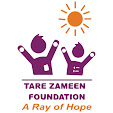With 472 million children, India has the largest child population in the world and campaigners say the lockdown has impacted around 40 million children from poor families.
These include those working in farms and fields in rural areas, as well as children who work as ragpickers in cities or sell balloons, pens and other knick-knacks at traffic lights. According to one estimate, Delhi has more than 70,000 street children.
On an average, these homeless are usually independent and get food only once in 2-3 days.
In fact, a 24-hour emergency phone helpline for children, provided by the Indian government, has seen a massive spike in the number of daily calls ever since the lockdown began on 24 March. In the first seven days of the shutdown, Childline India Foundation's number - 1098 (ten-nine-eight) - received about 300,000 calls as against a weekly average of 200,000.
Education issues:
In India, 320 million students have been affected by COVID-19 school closures, and though the government quickly recommended shifting to “online teaching,” this ignores India’s immense digital divide—with embedded gender and class divides. The 2017-18 National Sample Survey reported only 23.8 percent of Indian households had internet access. In rural households (66 percent of the population), only 14.9 percent had access, and in urban households only 42 percent had access. And males are the primary users: 16 percent of women had access to mobile internet, compared to 36 percent of men. Young people’s access is even less: A recent news report stated only 12.5 percent of students had access to smartphones. Furthermore, most teachers are ill-equipped for online teaching.
Mental and Emotional issues:
It was found that 83 per cent of the people agreed that pandemic had impacted their mental health condition and made it worse, while the 26 per cent reported that they were not able to get the required mental health support due to the COVID-19 outbreak.
Age Problems
1. 3-6 This age group was the one left out freely, now that they lack this and with low maturity they suffer from: Anxiousness, willingness to run out in fields to play.
According to a recent survey, 7 out of 10 children of this age group were deeply saddened by the lockdown and showed low response index reasons could be lack of alternative, monotonous environment and no new interesting activity taking place.
This age group are also missing out the activity done in school. Since, they were new joinees in school, more they miss is the fun. According to the above survey, 5 out of 10, wanted to rejoin school as soon as possible.
2. 6-9 This age group basically misses out is the feeling of going to school. These children have inculcated the feeling of:
- The fear of missing out from fiends.
- Social isolation, turning introvert
According to the survey, children of this age who are lonely might be as much as three times more likely to develop depression in the future than others, and that the impact of loneliness on mental health could last for at least 9 years. There is also evidence that duration of loneliness may be more important than the intensity of loneliness in increasing the risk of future depression among these children.
Looking for the aspect of education, their worriedness is more than the previous group due to higher level of maturity. 8 out of 10 want rejoin school.
3. 9-12 This group is burdened with pressure and uncertainty of examinations and future.
The majority of mental health issues arise before the age of 24, with 50% of children’s difficulties established by age 9-12.
These children may find this time frustrating, especially as they are isolated away from peers. it’s common for them to feel directionless while schools and exams are on hold.
It is matter to worry about kids spending a lot of time on their own on their phones. As well as social media issues, they see headlines, and if they try to process that without an adult putting what they’re seeing into perspective, it could add to their anxiety.






1 Comments
Free Treatment in India
ReplyDelete